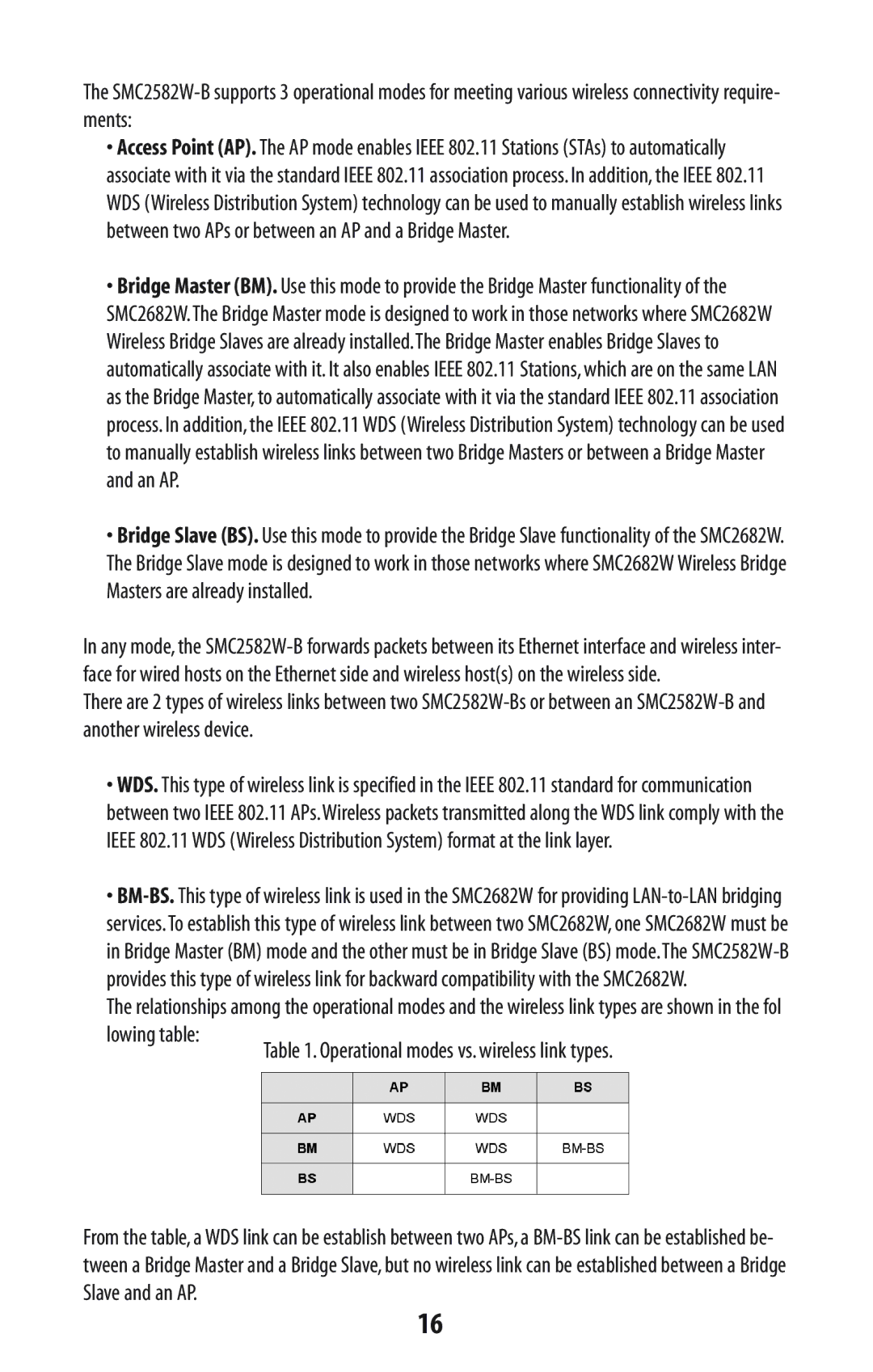
The
•Access Point (AP). The AP mode enables IEEE 802.11 Stations (STAs) to automatically associate with it via the standard IEEE 802.11 association process. In addition, the IEEE 802.11 WDS (Wireless Distribution System) technology can be used to manually establish wireless links between two APs or between an AP and a Bridge Master.
•Bridge Master (BM). Use this mode to provide the Bridge Master functionality of the SMC2682W.The Bridge Master mode is designed to work in those networks where SMC2682W Wireless Bridge Slaves are already installed.The Bridge Master enables Bridge Slaves to automatically associate with it. It also enables IEEE 802.11 Stations, which are on the same LAN as the Bridge Master, to automatically associate with it via the standard IEEE 802.11 association process. In addition, the IEEE 802.11 WDS (Wireless Distribution System) technology can be used to manually establish wireless links between two Bridge Masters or between a Bridge Master and an AP.
•Bridge Slave (BS). Use this mode to provide the Bridge Slave functionality of the SMC2682W. The Bridge Slave mode is designed to work in those networks where SMC2682W Wireless Bridge Masters are already installed.
In any mode, the
There are 2 types of wireless links between two
•WDS. This type of wireless link is specified in the IEEE 802.11 standard for communication between two IEEE 802.11 APs.Wireless packets transmitted along the WDS link comply with the IEEE 802.11 WDS (Wireless Distribution System) format at the link layer.
•
The relationships among the operational modes and the wireless link types are shown in the fol
lowing table:
Table 1. Operational modes vs. wireless link types.
From the table, a WDS link can be establish between two APs, a
16
